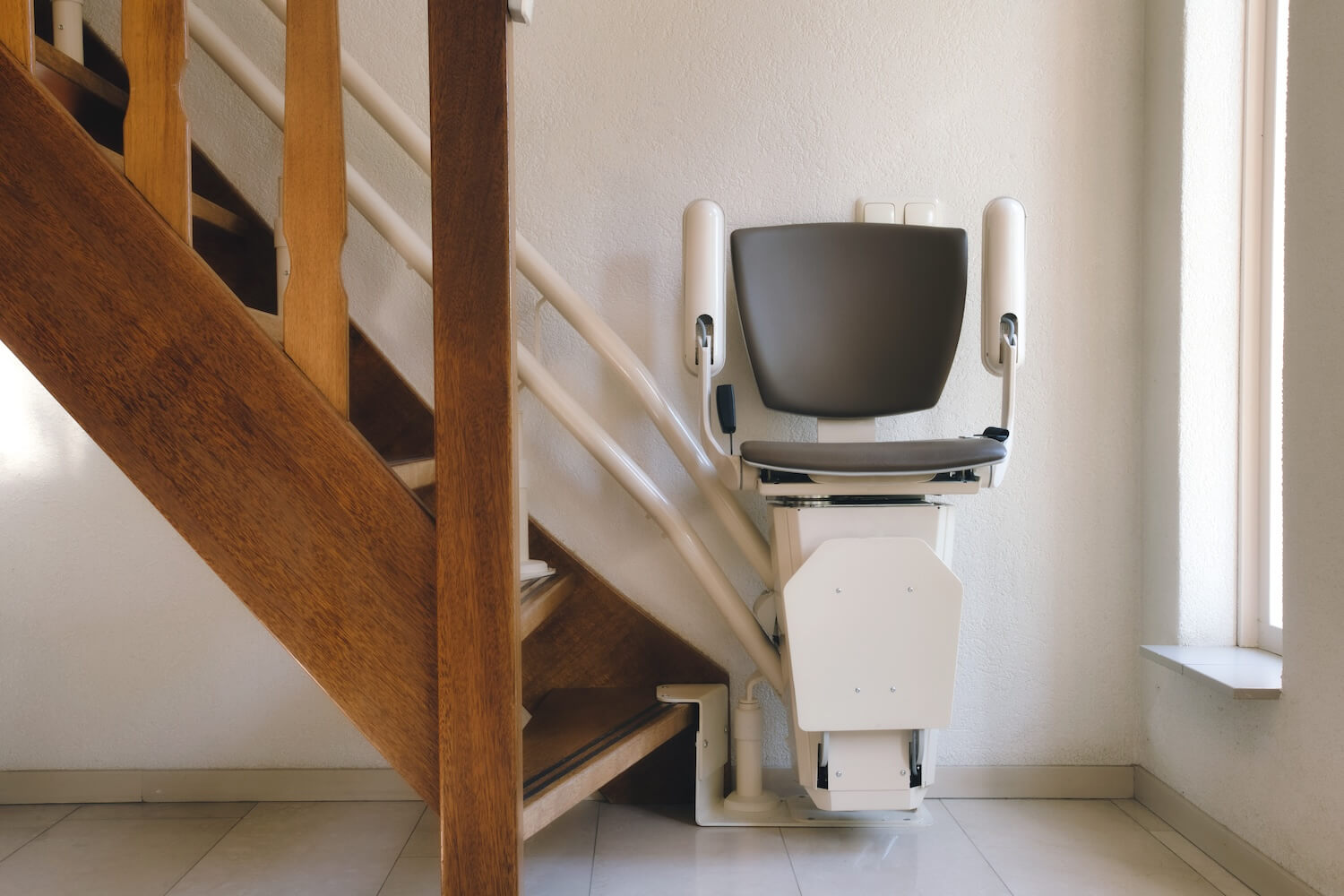Stair lifts have revolutionized mobility and accessibility for individuals with limited mobility or disabilities. These innovative devices provide a safe and convenient solution for navigating stairs, allowing users to maintain independence and freedom within their own homes. However, like any mechanical system, proper installation and regular maintenance are essential to ensure optimal performance and longevity. In this comprehensive guide, we will delve into everything you need to know about installing and maintaining stair lifts.
Understanding Stair Lifts
Stair lifts, also known as chair lifts or stair gliders, are motorized devices designed to transport individuals up and down stairs effortlessly. They typically consist of a chair or platform attached to a rail system that is installed along the staircase. The chair or platform moves along the rail, allowing users to ascend or descend the stairs safely and comfortably.
Installation Process
Installing a stair lift requires careful planning and expertise to ensure safety and functionality. Here are the key steps involved in the installation process:
- Assessment: The first step is to conduct a thorough assessment of the staircase and the user’s mobility needs. This includes measuring the dimensions of the staircase, evaluating any obstacles or obstructions, and determining the most suitable type of stair lift (straight, curved, or outdoor).
- Customization: Depending on the specific requirements, the stair lift may need to be customized to fit the staircase perfectly. This may involve adjusting the rail length, modifying the seat or platform, and selecting additional features such as swivel seats or folding footrests.
- Mounting: The rail system is securely mounted to the staircase using brackets or supports. For straight staircases, the installation process is relatively straightforward, while curved staircases may require more complex configurations to accommodate the curvature.
- Electrical Wiring: Stair lifts are powered by electricity, so it’s essential to ensure proper electrical wiring and connections. A licensed electrician should handle the wiring to ensure compliance with safety regulations and prevent any electrical hazards.
- Testing and Calibration: Once the installation is complete, thorough testing and calibration are conducted to ensure that the stair lift operates smoothly and safely. This includes testing the movement, safety features, and emergency stop mechanisms.
Maintenance Tips
Regular maintenance is crucial to keep your stair lift in optimal condition and prevent any potential issues. Here are some essential maintenance tips to follow:
Cleaning
Regularly clean the rail, seat, and controls to remove dust, dirt, and debris. Use a soft cloth or brush to gently wipe down the surfaces, and avoid using harsh chemicals that may damage the components.
Lubrication
Apply lubricant to the moving parts of the stair lift, such as the rail and gears, to reduce friction and ensure smooth operation. Be sure to use a lubricant recommended by the manufacturer and follow the instructions carefully.
Inspection
Periodically inspect the stair lift for any signs of wear or damage, such as loose bolts, worn-out components, or unusual noises. Address any issues promptly to prevent further damage and ensure safety.
Battery Maintenance
If your stair lift is battery-powered, make sure to check the battery status regularly and replace the batteries as needed. Keep the battery terminals clean and free of corrosion to maintain optimal performance.
Professional Servicing
Schedule regular maintenance checks with a certified technician to inspect and service the stair lift professionally. They can identify any potential problems early on and perform any necessary repairs or adjustments.
Troubleshooting Common Issues
Despite proper maintenance, stair lifts may encounter occasional issues that require troubleshooting. Here are some common problems and their potential solutions:
- Stair lift not moving: Check the power supply and ensure that the unit is plugged in properly. If the power is on but the stair lift still doesn’t move, there may be a fault with the controls or motor that requires professional attention.
- Unusual noises: Grinding or squeaking noises may indicate a lack of lubrication or worn-out components. Apply lubricant to the affected areas and inspect for any signs of damage or wear.
- Stair lift stopping abruptly: If the stair lift stops abruptly during operation, it could be due to an obstruction on the rail or a fault with the safety sensors. Clear any obstacles and inspect the sensors for any issues.
- Battery issues: If your stair lift is battery-powered, check the battery status and connections to ensure proper functionality. Replace the batteries if necessary and clean the terminals to maintain a good connection.
The Importance of Professional Maintenance and Installation for Stair Lifts
Stair lifts are intricate mechanical devices designed to provide safe and efficient transportation for individuals with mobility limitations. While they offer numerous benefits, such as enhanced mobility and independence, ensuring their proper installation and maintenance is crucial to their performance, longevity, and safety. Here’s why professional maintenance and installation are essential:
- Expertise and Experience: Professional installers possess the necessary expertise and experience to install stair lifts correctly. They are trained to assess the unique requirements of each staircase and user, ensuring that the stair lift is installed safely and securely. Attempting to install a stair lift without the proper knowledge and skills can result in errors that compromise the safety and functionality of the device.
- Compliance with Regulations: Stair lift installation must adhere to building codes and safety regulations to ensure compliance with industry standards. Professional installers are familiar with these regulations and can ensure that the installation meets all necessary requirements. This includes factors such as weight capacity, clearance space, and electrical safety, which are critical for the safe operation of the stair lift.
- Customization and Configuration: Stair lifts come in various configurations to accommodate different types of staircases, including straight, curved, and outdoor stairs. Professional installers can customize the stair lift to fit the specific dimensions and layout of the staircase, ensuring a perfect fit. They can also recommend additional features and accessories based on the user’s needs and preferences, enhancing the functionality and comfort of the stair lift.
- Warranty and Liability: Most stair lift manufacturers offer warranties that cover defects in materials and workmanship. However, these warranties may be voided if the stair lift is not installed by a certified professional. By hiring a professional installer, you ensure that the installation is done correctly and in accordance with the manufacturer’s guidelines, preserving the warranty coverage and protecting against liability in the event of accidents or malfunctions.
- Safety and Reliability: Professional installation is essential for ensuring the safety and reliability of the stair lift. Improper installation can result in structural weaknesses, mechanical failures, or malfunctions that pose safety hazards to users. Professional installers follow industry best practices and safety protocols to mitigate risks and ensure that the stair lift operates smoothly and reliably.
- Proper Maintenance: Regular maintenance is crucial for keeping stair lifts in optimal condition and preventing potential issues. Professional technicians have the knowledge and tools to perform thorough inspections, lubrication, adjustments, and repairs as needed. They can identify and address minor problems before they escalate into major issues, prolonging the lifespan of the stair lift and maximizing its performance.
- Peace of Mind: Hiring a professional installer and maintenance provider gives users and their families peace of mind knowing that their stair lift is installed correctly and well-maintained. Professional technicians are available to address any concerns or issues promptly, minimizing downtime and disruptions to daily life.
Benefits of Stair Lifts
Stair lifts offer numerous benefits that make them a worthwhile investment for individuals with mobility limitations. Here are some key advantages:
Enhanced Mobility
Perhaps the most significant benefit of stair lifts is the increased mobility and independence they provide. Users no longer have to struggle with climbing stairs, reducing the risk of falls and injuries and enabling them to move freely between different levels of their homes.
Safety
Stair lifts are equipped with various safety features to ensure a secure and comfortable ride. These may include seat belts, safety sensors to detect obstacles or obstructions, and emergency stop buttons. By eliminating the need to navigate stairs manually, stair lifts minimize the risk of accidents and promote peace of mind for both users and their caregivers.
Convenience
Stair lifts offer unparalleled convenience, allowing users to access all areas of their homes without assistance. Whether it’s going upstairs to the bedroom or downstairs to the living room, users can simply sit back and let the stair lift do the work, saving time and energy.
Adaptability
Stair lifts are available in a variety of configurations to suit different types of staircases, including straight, curved, and outdoor stairs. This adaptability means that virtually any home can be equipped with a stair lift, regardless of its layout or design.
Improved Quality of Life
For individuals with mobility limitations, a stair lift can significantly improve their quality of life by enabling them to remain in their own homes and maintain their independence. Being able to access all areas of the home comfortably and safely promotes a sense of autonomy and dignity.
Cost-Effectiveness
While the initial cost of purchasing and installing a stair lift may seem significant, it is often more affordable than alternative solutions such as moving to a single-story home or installing an elevator. Additionally, the long-term benefits of improved mobility and safety can outweigh the initial investment.
Customization Options
Stair lifts can be customized to meet the specific needs and preferences of individual users. From choosing the type of seat or platform to adding features such as swivel seats, folding footrests, or remote controls, users can tailor their stair lift to suit their unique requirements.
Easy Installation
Despite their advanced technology, stair lifts are relatively easy to install compared to other accessibility solutions. Professional installation ensures that the stair lift is safely and securely mounted to the staircase, minimizing disruption to the home environment.
Increased Home Value
Installing a stair lift can enhance the resale value of a home, especially for older adults or individuals with disabilities who may require accessibility features. Potential buyers may see a stair lift as a valuable asset that improves the usability and appeal of the property.
Conclusion
In conclusion, stair lifts offer a wide range of benefits that make them a worthwhile investment for individuals with mobility limitations. From increased mobility and safety to convenience and adaptability, stair lifts provide a practical and cost-effective solution for navigating stairs and maintaining independence at home. With proper installation and maintenance, a stair lift can significantly improve the quality of life for users and their families, making it a valuable addition to any home.


